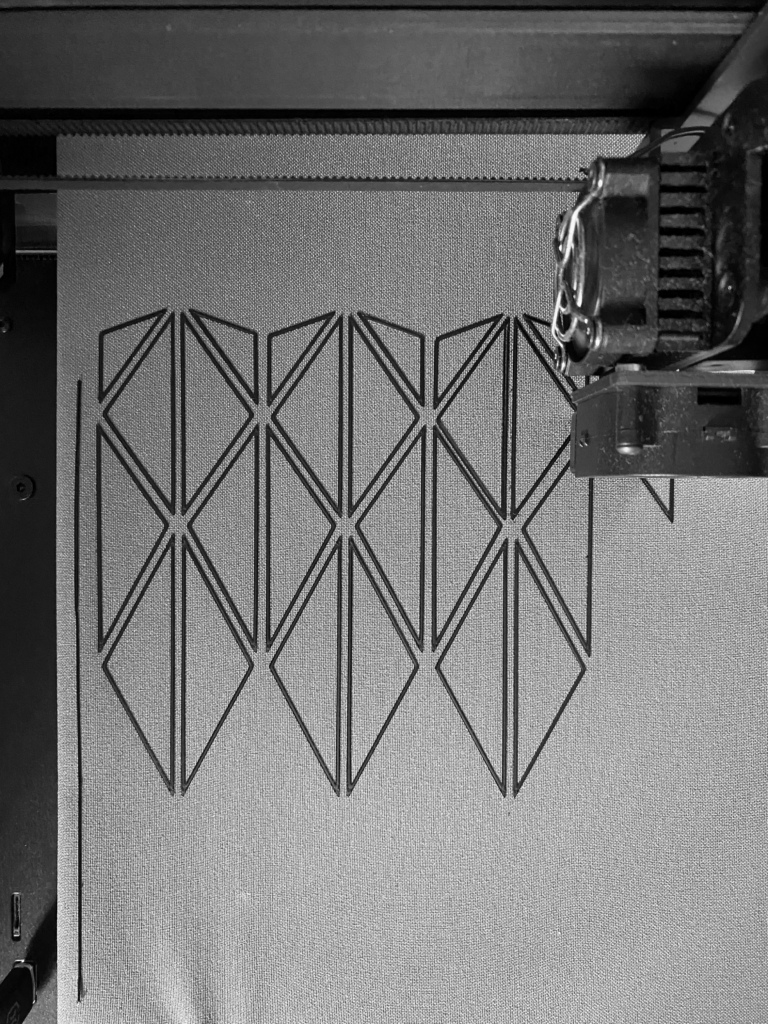Curious, observant, and structured are qualities of mine that help me to do research. In addition, I am analytical and have great willpower to research a wide range of topics thoroughly, ranging from shape-changing materials to speculative design. Furthermore, I ensure that hands-on explorations are an integrated part of my design processes, which ensures that I understand the materials I work with and so that I can delve into potentially interesting techniques and beneficial machines. This often practical approach is also reflected in making prototypes, where I realize prototypes with electronics and test them with users. User studies are something I like organizing, and where my observational ability and my empathy come in handy. I am a good listener and try to understand people and in that way be able to further design and do research. In a team, I am someone who keeps track of the planning and to-dos, divides tasks, and tries to remain realistic. I am a real team player who does not want to disappoint anyone and wants to keep everyone motivated. In this way, I am a good mediator and try to listen and understand everyone.
My interests lie in the field of wearables and interactions with soft materials. This can be applied, for example, in the area of shape-changing interfaces. In this field, I find the human aspect fascinating, and here it is essential to approach the embodiment of the user. This interest goes well with my skills of working with soft materials, such as fabrics, as I like to make clothes with my sewing machine and do other handicrafts such as embroidery or knitting. Contexts and applications are very variable for me, from mobility to fashion, where I find it important to be able to help people and give them different perspectives on emerging technologies and innovations. I like to delve into different matters to find out everything and share that knowledge through designs to inspire others and contribute to the research world.


Our products are getting more intelligent and autonomous, and we as users have to learn to deal with them and to use them in our daily lives. Tangible User Interfaces (TUI) and interactive materials can facilitate an easier transition to these intelligent and autonomous systems and products [2]. I got much inspiration from Mr. Ishii’s vision of Tangible Bits and Radical Atoms [3, 4]. Tangible Bits means that the digital ‘bits’, the data, are made tangible so that these graspable objects and ambient media will help us towards a much richer multi-sensory experience of digital information [4]. Radical Atoms [3] takes it one step further by incorporating these digital bits into shape-changing materials to be able to physically manipulate and perceive the data directly and see the data change physically reflected in the material. This means that the tangible and physical appearance of the digital world provides opportunities such as other forms of interactions, Tangible Embodied Interaction (TEI), or receiving data in the periphery.
One of the fields that could benefit from such a tangible approach is the world of Artificial Intelligence [2]. For example, AI personal assistants such as Siri [1], where the interaction happens via speech. However, this has many disadvantages, such as that it is not useful in every context, e.g., a social context, or a noisy context. Looking at these challenges of the digital and autonomous world and opportunities in the physical world, I want to explore tangible solutions and more new possibilities with my hands-on approaches and research through design methods [5]. I believe that by combining the digital and physical worlds, we can create richer multi-sensory experiences, provide different and better interaction forms with AI and ensure that we understand our intelligent products and systems and live with them in our daily lives.
